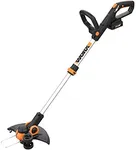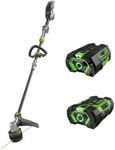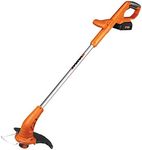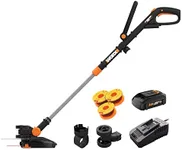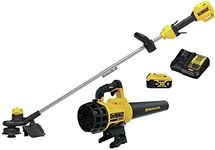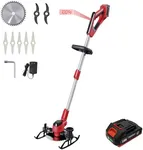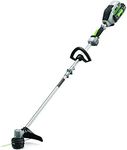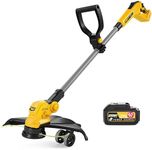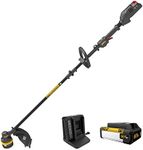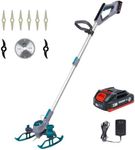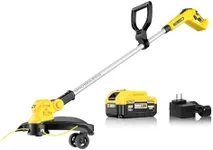Buying Guide for the Best Cordless Weed Wackers
Choosing the right cordless weed wacker can make your yard work much easier and more efficient. When selecting a weed wacker, it's important to consider various specifications that will determine how well the tool meets your needs. Understanding these key specs will help you make an informed decision and ensure you get the best fit for your gardening tasks.Battery VoltageBattery voltage indicates the power output of the weed wacker. Higher voltage means more power, which is useful for tackling thicker and tougher weeds. Typically, battery voltages range from 18V to 80V. For light to moderate yard work, a 20V to 40V battery should suffice. For larger areas with dense vegetation, consider a 40V to 80V battery. Choose based on the size of your yard and the type of weeds you need to manage.
Battery LifeBattery life determines how long the weed wacker can operate on a single charge. This is crucial for uninterrupted work, especially in larger yards. Battery life is often measured in ampere-hours (Ah), with higher Ah values indicating longer run times. For small to medium yards, a battery with 2.0Ah to 4.0Ah should be adequate. For extensive areas, look for batteries with 5.0Ah or more. Consider how long you typically spend on yard work to choose the right battery life.
Cutting WidthCutting width refers to the diameter of the area the weed wacker can cut in a single pass. A wider cutting width means you can cover more ground quickly, which is ideal for larger yards. Cutting widths usually range from 10 to 15 inches. For small gardens or precise trimming, a 10 to 12-inch cutting width is suitable. For larger areas, a 13 to 15-inch cutting width will help you finish the job faster. Match the cutting width to the size of your yard and the precision required.
WeightThe weight of the weed wacker affects how easy it is to handle and maneuver. Lighter models are easier to use for extended periods and are less tiring. Weed wackers typically weigh between 5 to 15 pounds. For smaller yards or if you have limited strength, a lighter model (5 to 8 pounds) is preferable. For larger areas or if you need more power, you might opt for a heavier model (9 to 15 pounds). Consider your physical capability and the duration of use when choosing the weight.
Adjustable ShaftAn adjustable shaft allows you to change the length of the weed wacker to suit your height and reach. This feature is important for comfort and reducing strain on your back and arms. Some models offer telescoping shafts that can be easily adjusted. If multiple people of different heights will be using the tool, or if you need to reach under bushes or in tight spaces, an adjustable shaft is highly beneficial. Choose a model with this feature for greater versatility and comfort.
Line Feed SystemThe line feed system determines how the cutting line is advanced during use. There are three main types: bump feed, automatic feed, and fixed line. Bump feed requires you to tap the head on the ground to release more line, which gives you control but can be cumbersome. Automatic feed releases line as needed, offering convenience but potentially wasting line. Fixed line systems use pre-cut lengths of line, which are easy to replace but less flexible. Choose based on your preference for control and convenience.
